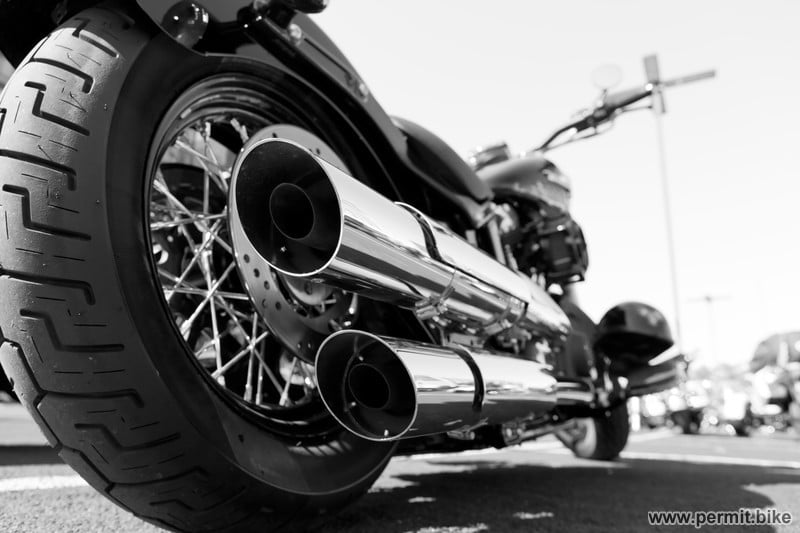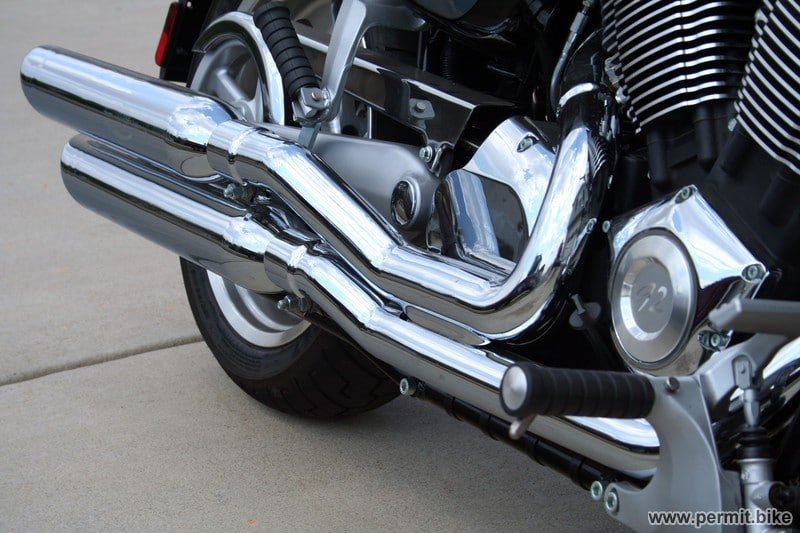If you’re thinking about buying your first motorcycle you probably have more questions than answers right now. You’re overflowing with excitement, but you’re not sure which bike will be the best fit for you, in a number of ways. If you’re relying on the advice of salespeople in bike dealerships you might get slightly biased advice, so we’d like to share some tips to help you make a more informed choice.

Types of Bikes
Cruisers
If you don’t know what a cruiser looks like it’s basically a Harley Davidson style of bike, sacrificing speed and handling for comfort and lots of chrome. Cruisers are typically suited to shorter people who are more interested in arriving in style than anything else.
Sportsbikes
This type of bike has lots of nicknames, but crotch rocket is the one that best suits them. A sportsbike is a lightweight, powerful bike designed to get you from point A to B in the shortest possible time. Most sportsbikes aren’t suited to long-distance riding, but what they lack in comfort they make up for in terms of looks and power. They will, however, drink petrol like a thirsty camel.
Sports Tourer
These take the power of a sportsbike and match it to a comfortable frame and riding position, with far better fuel economy. Sports tourers are designed for carrying one or more people, plus their luggage, comfortably over long distances.
Dual Sport
If live in a rural area, or you just like the idea of off-road driving, then a dual sports bike is perfect for you. They have rugged suspension, an upright sitting position, and can take a lot of punishment. Engines in dual sports bikes do need to be maintained on a regular basis, so this is something to take into account.
Street/Standard
A winning combination of comfort, fuel economy and affordability make street, or standard, bikes the perfect choice for a commuter. A street bike will come in engine capacities of around 600cc, so you still have plenty of grunt left in the engine for riding as fast as you need to.
Bike Purpose
It’s important that you’re very clear about exactly what you’ll be using your bike for, and then purchase one which matches your needs. Are you looking for bike suitable for daily commuting, or for long distance weekend rides? Riding a heavy cruiser to and from work each day might look cool, but a standard street bike would be more economical and far easier to handle in heavy traffic. On the other hand if you’re looking for a more sedate riding experience a cruiser offers that by the bucket load. If possible test ride as many different bikes as you can, because how a bike looks and how it rides are two completely different things.
Your budget
As tempting as it might be to rush out and buy a brand new BMW KLR 1200S, this probably won’t do your finances any favors. A new motorcycle will cost anywhere from $5,000 to $20,000, with used motorcycles starting at around $2,000 for anything worth owning. Most dealerships have financing options available, but please stay focused on what you actually need your bike for. Choose a budget and stick to it, although a budget of $10,000 will allow you to purchase a great used bike, with low mileage, from any dealership.
The Fit
This is really simple: If you can’t put your feel flat on the ground while sitting in the saddle then the bike is the wrong size for you. Some newer bikes come with adjustable saddles, but your feet need to be firmly on the floor when stationary – if you’re balancing on your toes the bike is far too tall for you. You should also be able to reach the handlebars without putting strain on your back or your neck. A bike that feels even slightly uncomfortable during a test ride will leave you in absolute agony on a long distance ride – believe us, we’ve been there.

Engine size
All motorcycles are advertised, and rated, by their engine size. In fact, engine capacity is such a big deal for bikes it’s included in the name of the bike, e.g. Honda Shadow 1100. We can’t stress how important it is to pay attention to the engine capacity of each bike, and how that will affect your ability to ride it. For example a 600cc cruiser won’t be capable of more than 80mph, whereas a 600cc sportsbike will be capable of speeds in excess of 100mph. Most young bikers involved in fatal accidents purchased bikes that were more powerful than they could handle. Beginners should start out with a 250cc bike, upgrading to a 500/600cc engine after their first year on the road, and some additional training. Once you have a few years of riding under your belt you can start looking at engine capacities over 1000cc, and even then you need to be realistic about your riding abilities.
Dry Weight
Even modern motorcycles can be deceptively heavy, so please ensure you’re comfortable with the weight of your bike. The easiest way to test this is to put the bike on its centre stand, or try to. Part of this requires skill, but there’s a physical element too. So, if you find yourself struggling to get the bike on its center stand then it’s too heavy for you to own. This will become more apparent if you drop your bike and have to get it upright without assistance from anyone else.
Used Bikes
There’s an old saying that a new bike becomes a used bike the split second it leaves the dealership floor, with an instant drop in value of at least 10%. Buying a used bike might seem like a daunting task, but it’s actually pretty straightforward, especially if you’re buying from a dealership. Bring along a friend who has owned several bikes – they’ll spot potential flaws or issues you might skim over due to a lack of experience.
Things to watch out for:
- Dents or rust on the bodywork – this might indicate the bike has been involved in an accident
- Faded paintwork – the bike has been exposed to the weather all year round
- Odometer readings – if the odometer says 20,000 miles, but the bike looks like it’s done 100,000, then somebody has “clocked” the bike
- Aftermarket components – especially check that the bike has had its fuel supply adjusted for aftermarket mufflers or exhaust systems
- Maintenance log – if you can’t see proof that the bike has been serviced regularly you’re better off avoiding it
- Brake discs – are they smooth and clean, or warped and rusty. Cracked or badly worn brake discs are a no-no.
- Leaks – check around the engine casing, chain and forks, and brake calipers for any fluid leaking out.
- Startup – the bike should start with minimal effort, even if it’s off a kick-start. Clouds of smoke are also a bad sign.
Always listen to your gut instinct when buying a new, or used, motorbike – using common sense is as important as following any of the advice we’ve outlined in this article.
Permit.Bike is singularly devoted to the purpose of providing an easy-to-learn and simple approach to the act of riding.
